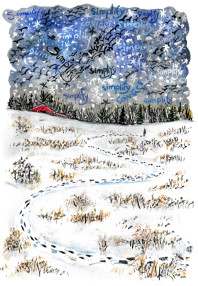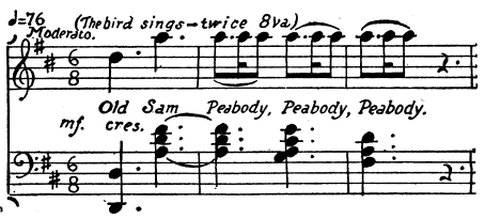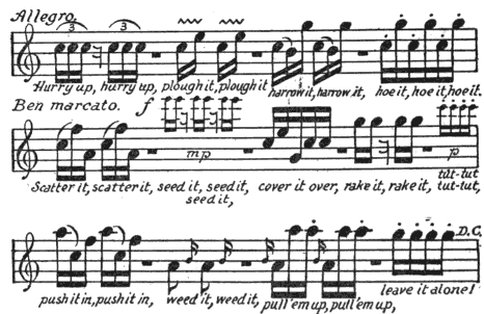WINTER IS A GREAT TIME FOR NOTICING the little things. Maybe a clump of snow dropping silently from a bough. Maybe a red fox trotting up the driveway. Maybe the shimmering snow crystals called “diamond dust” that sometimes, on very cold days, drift down from a blue sky.
For years I’ve been trying to simplify my life in an effort to be more aware of such things, but I haven’t made much headway. The effort always makes me think of Thoreau, in Walden, where he famously scolded us to “simplify, simplify,” then proceeded to weave a deliciously complex tapestry of a book. It’s as it should be. The most enduring books, like natural communities, are made stronger by their complexity. Those tens of thousands of words in intricate arrangement focus our attention, expand our view of the world, and remind us that we’re surrounded every moment by an unimaginable abundance of things. Surely our greatest achievement has been to make language a proxy for the stars in the sky, for snowflakes and flocks of birds and people on a street, for the countless sensation-packed moments that make up our lives.
Maybe we seek the spare and elemental in nature for the same reason that the protagonist in Don DeLillo’s Cosmopolis reads poetry: “He liked spare poems sited minutely in white space…Poems made him conscious of his breathing.” What if the simple life—the only one we can hope to find—is found within the white-space of the world?
But of course we’re not simple creatures. Bare moments don’t hold our attention for long. Eventually most of us require more than white space and cloud spout; more than the twice-warming flames in a fireplace; more than the monkish austerity of a single room, a candle, and a few books. Thoreau’s enthusiasm is infectious—“Think of our life in nature…rocks, trees, wind on our cheeks! The solid earth! the actual world! the common sense! Contact! Contact!”—but I suspect that we’re more interested in his boldness and passion and the complexity of his mind than in the simple life he espoused. The louder Thoreau crowed in praise of simplicity, the more convincing became his argument against it.
Yet there’s the winter landscape. This morning, after a night of fresh snow, the field behind my house was almost nothing but white space, with only a few stems of dried knapweed and goldenrod rising above it. The stems marked the snow like ink scratches on a sheet of paper. It was the sparest poem imaginable: a single letter at the top of the page, a slash in the middle, a comma near the bottom. I almost couldn’t bring myself to spoil it. But then I set off across the field in my clumsy boots, thinking of this and that––and left a meandering trail that will be there until the next good snow erases it.
(This essay first appeared as a “Reflections” column in Michigan Blue Magazine. Copyright 2016 by Jerry Dennis )




12 Replies